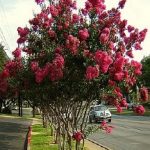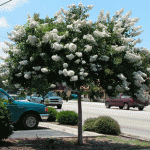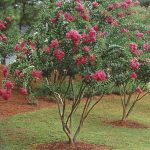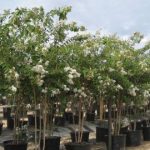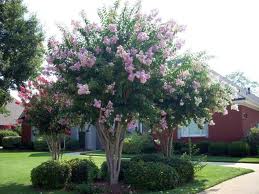 Crape Myrtle
Crape Myrtle
The Crape Myrtle tree is often referred to as the lilac of the south. With it striking flowers, beautiful bark, and attractive foliage, this species is a good landscaping tree. It can be grown as a shrub or small tree and is mostly used in groupings, hedges, containers and screens. It can also be planted on the streets or even around the compound of a mall.
The crape myrtle is scientifically known as the Lagerstroemia or crepe myrtle. It is a genus of close to fifty species of deciduous and evergreen shrub commonly found in the Indian sub-continent, northern Australia, Southeast Asia and Oceania parts. It belongs the family Lythraceae
They are mainly known for their colorful and long-lasting flowers which normally appear during the summer. The crape myrtle normally has sinewy, flutes stems and branches with a mottled appearance that arises from having bark that sheds throughout the year. The leaves of the crape myrtle tree are opposite and simple, with margins.
Its flowers usually blossom during the summer and autumn. The colors vary from deep blue to red or white. The fruit is usually a capsule, green, and succulent at first then ripening to dark brown or black dryness.
The crape myrtle typically grows to a height of 5-25 feet during maturity. The shrub grows at a first rate of around 24 inches annually. For it to grow properly, it requires at least six hours of direct sunlight daily. It grows in a wide range of soils, from slightly alkaline to acidic. It mostly prefers moist, well –drained soils. It is somewhat drought resistant. It stores enough water to last it for a while without water. It attracts bees which suck nectar from the flowers of the crape myrtle and also provides natural habitats for birds.
Attributes
- The crape myrtle can be grown as either a shrub or tree, depending on its intended purpose.
- It is best suited for hot and sunny climates since it is drought resistant and requires direct sunlight for it to grow properly.
- The crape myrtle tree produces wide, showy panicles in various shades of pink, with flowers that have wrinkled petals similar to crepe paper from late spring to fall.
- The Crape Myrtle has thin, gray bark that exfoliates thus showing its smooth under bark with different colors ranging from gray to black.
- It can have an increased number of flowers and branches if you pinch them at their early stage.
- It features a foliage which is dark green and after a while, it changes to shades of yellow, orange and then red in the fall.
- It normally grows in a vase shape.
These are the attributes of the crape myrtle; apparently, it is quite a tree. It is beautiful and at the same time can be used for domestic purposes. You can plant around your house or property so that it can act as barrier or privacy screen. It grows well in a limited soil space.
Ready to Order ?
